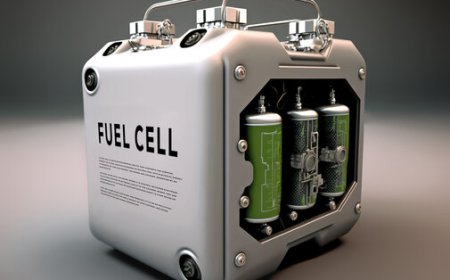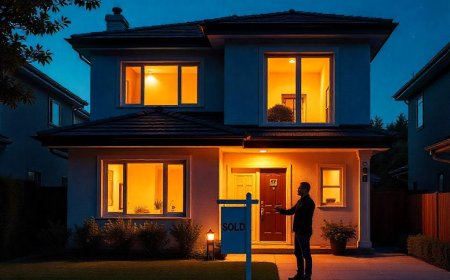Vinyl vs. Wood Fencing: Which One Should You Ask Your Fence Company to Install?
In this guide, we’ll walk through a detailed comparison of vinyl vs. wood fencing to help you make a more informed decision before your next fencing project.

Choosing the right fence for your property is more than just a matter of appearanceit's a long-term investment that affects privacy, durability, maintenance, and even property value. Two of the most popular options homeowners consider are vinyl and wood fencing. While both offer unique benefits, they also come with trade-offs that can impact your experience years down the road.
If you're struggling to choose between these two popular materials, the smartest move is to consult with a trusted fence company. Theyll help you evaluate which type of fence is best suited for your goals, budget, climate, and aesthetic preferences.
Appearance and Style
Wood fencing offers a natural, timeless look that complements nearly any home style. Whether youre going for a classic white picket fence or a tall privacy wall made from cedar or redwood, wood offers warmth and texture thats hard to beat. It can also be painted or stained in nearly any color to match your homes aesthetic.
Vinyl fencing, on the other hand, has come a long way in recent years. High-quality vinyl fences now mimic the texture of wood while offering sleek, clean lines and a polished finish. While it may not have the same organic feel as real wood, vinyl offers modern style and visual uniformity that appeals to many homeowners.
A fence company can show you physical samples or design mock-ups so you can compare the look and feel of each option on your property.
Durability and Longevity
When it comes to long-term durability, vinyl fencing clearly takes the lead. Vinyl is resistant to moisture, rot, insect damage, and UV exposure. It doesn't warp, crack, or splinter, and high-quality vinyl fences can easily last 20 to 30 years or more with minimal upkeep.
Wood fences, while durable in the short term, require more protection and maintenance. Without regular staining or sealing, wood can rot, mold, or be attacked by termites. The lifespan of a wood fence can vary widely depending on the type of wood used and the climate. Softwoods like pine may last 1015 years with good maintenance, while hardwoods like cedar or redwood can last longer if properly treated.
A knowledgeable fence company will evaluate your regions climate and soil conditions to recommend the most durable material for your property.
Maintenance Requirements
One of the biggest differences between vinyl and wood fencing is maintenance.
Wood fencing requires ongoing care. This includes:
-
Regular inspections for rot, insect damage, and cracks
-
Repainting or restaining every 23 years
-
Power washing to remove mold, algae, and debris
-
Replacing broken or warped boards
Vinyl fencing, in contrast, is practically maintenance-free. Occasional cleaning with soap and water is usually all thats needed to keep it looking great. Theres no painting, no staining, and no sanding.
If you prefer a low-maintenance lifestyle, a fence company will likely suggest vinyl as the better fit for your long-term needs.
Cost Comparison
The upfront cost of wood fencing is generally lower than vinyl. This makes wood appealing for homeowners on a tight budget. However, its important to consider the long-term costs associated with maintenance and replacement.
Vinyl fences may cost more initially, but they often end up being more cost-effective over time due to their longevity and minimal upkeep. With fewer repairs and no need for paint or stain, many homeowners find that vinyl offers better value in the long run.
Your local fence company can provide accurate estimates for both options based on your yard size, design preferences, and installation complexity.
Environmental Impact
For eco-conscious homeowners, both materials present pros and cons. Wood fencing is biodegradable and comes from a renewable resource. However, the harvesting and chemical treatment of certain woods may contribute to deforestation or pollution if not sourced responsibly.
Vinyl fencing is made from synthetic materials (usually PVC), which are not biodegradable and involve a more energy-intensive manufacturing process. On the plus side, high-quality vinyl can be recycled, and because it lasts much longer, it produces less waste over time.
If sustainability is a key concern, ask your fence company about FSC-certified wood or recycled vinyl options that align with your values.
Privacy and Sound Insulation
Both wood and vinyl offer excellent privacy when built as full-panel fencing. However, woods thickness and density provide slightly better sound insulation compared to hollow vinyl panels. This makes wood a better choice if you live near a busy road or want to reduce noise between properties.
Vinyl still offers solid privacy, and some higher-end products are designed with reinforced panels that improve both strength and sound-blocking ability. A qualified fence company can recommend designs that maximize privacy and minimize noise, regardless of which material you choose.
Weather Resistance
If you live in an area with extreme weather conditionssuch as heavy rain, snow, or scorching sunvinyl fencing holds up extremely well. It resists moisture, doesn't swell or shrink, and wont be damaged by pests. Most vinyl fences are also UV-resistant, which prevents fading over time.
Wood fences, although strong, are more susceptible to weather damage. Constant exposure to sun and moisture can lead to cracking, warping, and rot if not regularly sealed. In humid or rainy climates, vinyl is generally a safer long-term choice.
Your fence company can advise you based on your local climate and soil drainage to ensure your fence remains stable and attractive for years.
Customization Options
When it comes to customization, wood fencing offers more flexibility. It can be cut, shaped, painted, and stained in nearly endless ways. Whether you want a classic picket fence, a shadowbox design, or a tall board-on-board layout, wood gives you more creative freedom.
Vinyl fencing, while available in many styles and colors, is somewhat more limited in design. Custom vinyl fence panels are available but may cost more or require special orders. However, some modern vinyl options now offer textures, woodgrain finishes, and ornamental caps to elevate their appearance.
A design-savvy fence company can help you explore customization options and even mix materials to get the best of both worlds.
Repairs and Replacements
Wood fences are generally easier and cheaper to repair. If a single picket is damaged, it can often be replaced without affecting the rest of the structure. Matching replacement wood is also easy to find in most regions.
Vinyl, however, can be more difficult to repair if panels crack or warp. In some cases, entire panels or sections need to be replaced. Depending on the brand and color, matching older vinyl can also be a challenge if the original fence is several years old.
If repair flexibility is a priority, your fence company may lean toward recommending wood, particularly for homeowners who want the option to make small fixes over time.
Resale Appeal
Curb appeal mattersespecially when its time to sell your home. Both vinyl and wood fences can enhance your property value when installed professionally and maintained well. That said, each appeals to different buyers.
Wood fencing tends to attract buyers who value classic design, traditional craftsmanship, and natural aesthetics. Vinyl fencing appeals to those who prefer modern styling, low maintenance, and durability.
A local fence company can offer insight into whats most popular in your neighborhood and help you choose the option that adds the most resale value to your home.
Final Thoughts
When it comes to vinyl vs. wood fencing, theres no one-size-fits-all answer. Each material has unique strengths and weaknesses that may align better with your lifestyle, budget, and long-term goals. If you prioritize low maintenance, long lifespan, and a clean look, vinyl might be your best bet. If you value natural aesthetics, customizability, and a lower upfront cost, wood may be the right choice.
The most reliable way to make your decision is to consult with a reputable fence company. Theyll assess your property, listen to your goals, explain the pros and cons in detail, and recommend a fencing solution that balances beauty, function, and value.
FAQs About Choosing Between Vinyl and Wood Fencing
Which fence material lasts longer: wood or vinyl?
Vinyl generally lasts longer than wood, often 2030 years or more with minimal maintenance. Wood fences can last 1020 years depending on the type of wood and how well they are maintained.
Is vinyl fencing more expensive than wood?
Vinyl has a higher upfront cost than wood, but its long lifespan and low maintenance requirements often make it more cost-effective over time.
Can I paint or stain a vinyl fence?
Vinyl fences are not designed to be painted or stained. They come in a variety of colors and finishes, so choose the color you want from the start. Wood fences, on the other hand, can be painted or stained multiple times.
Which fence is better for privacy?
Both wood and vinyl provide excellent privacy when installed with full panels. However, wood can offer better sound insulation in noisy areas.
Will my fence company install both vinyl and wood fencing?
Most fence companies offer both options and will walk you through the pros and cons of each. Be sure to ask about material samples, warranties, and cost estimates for each type.































